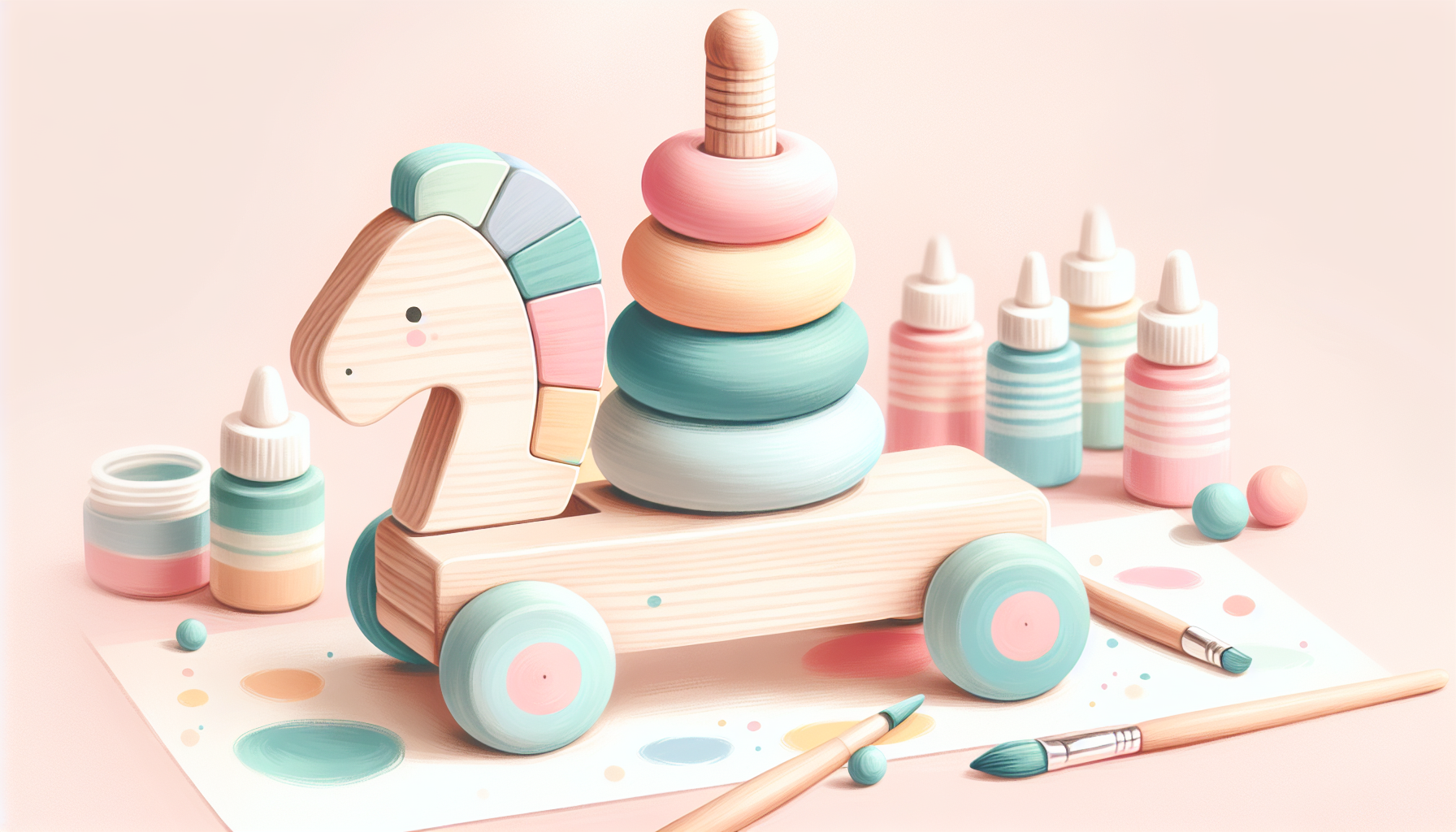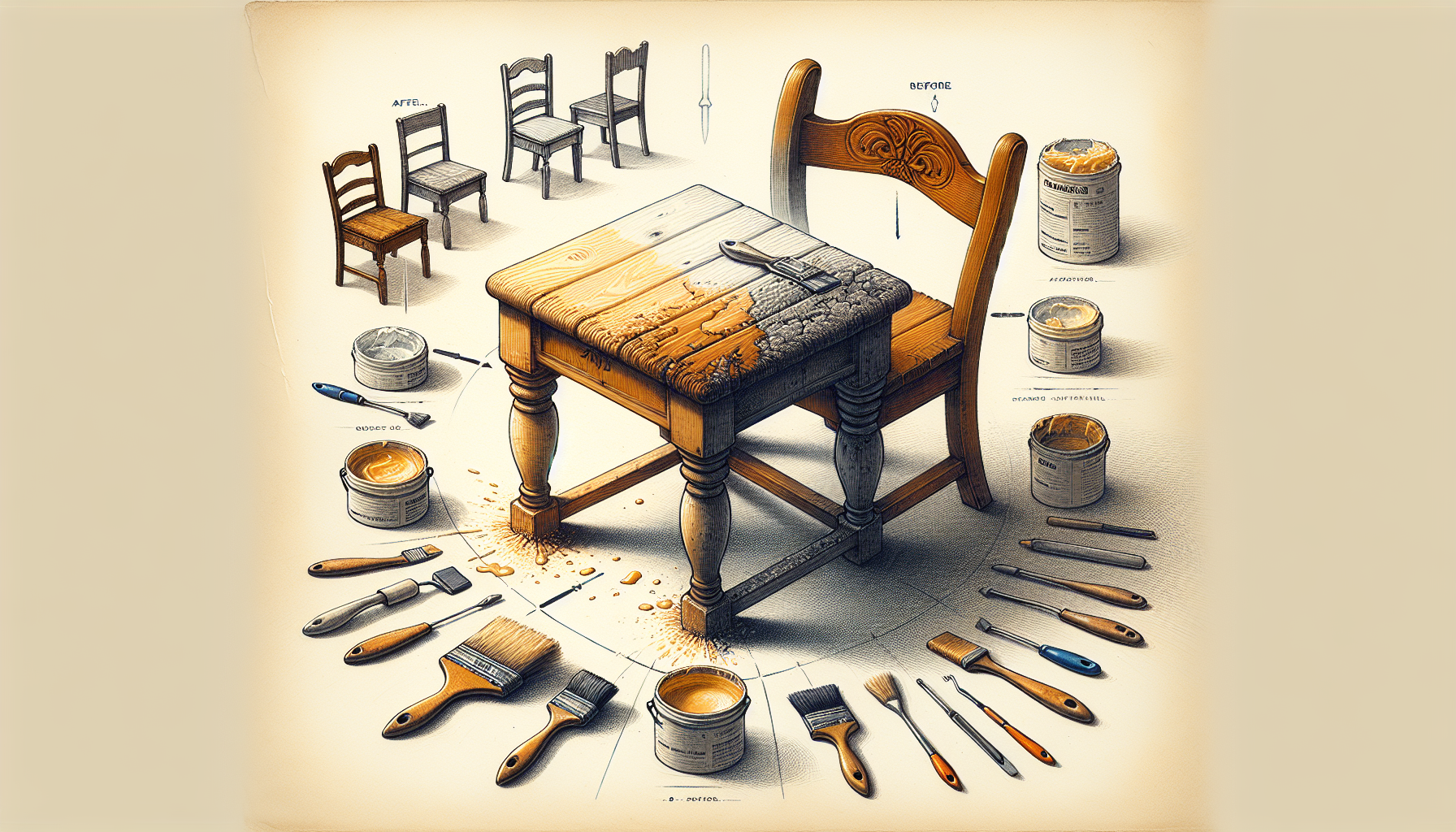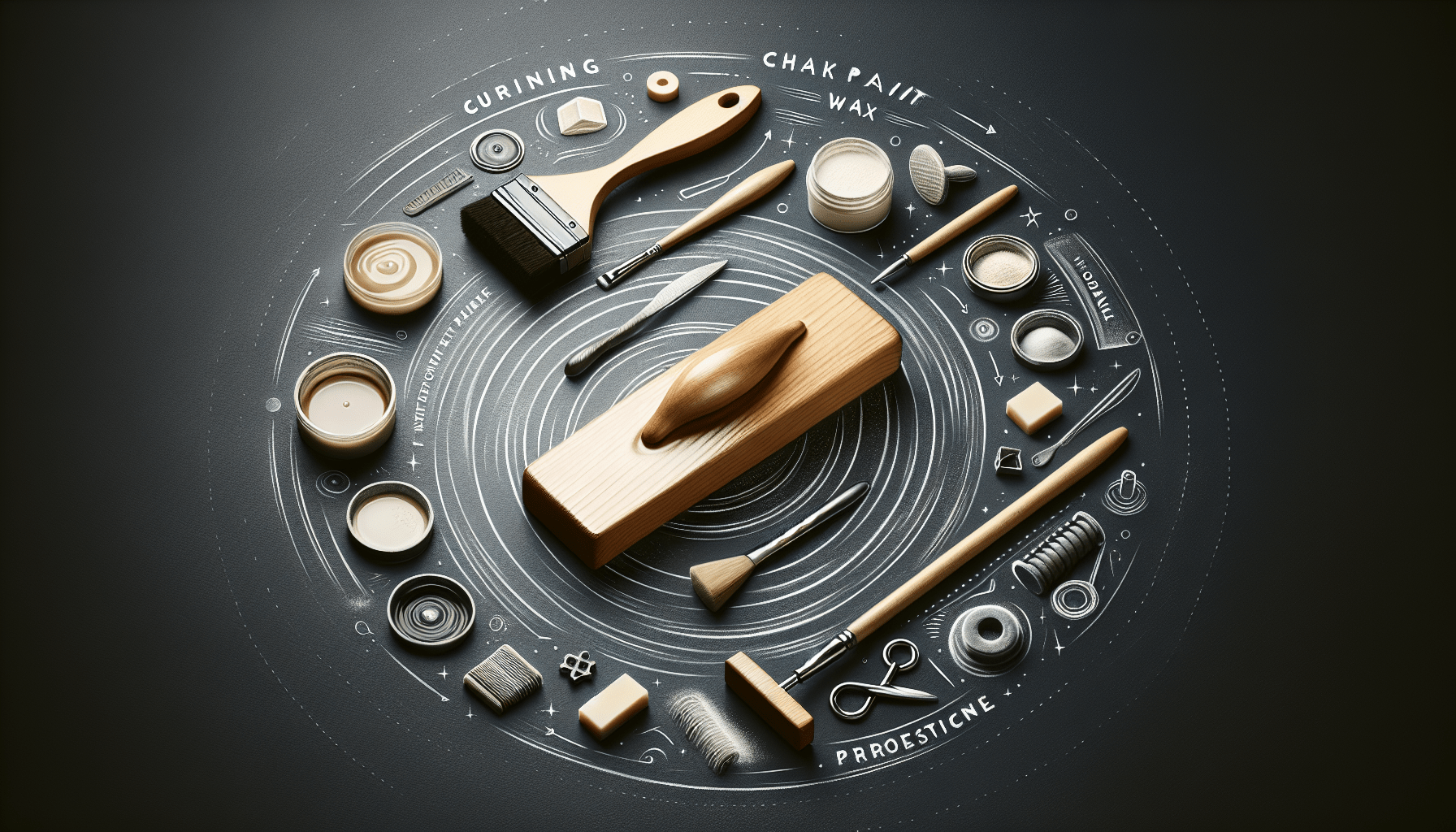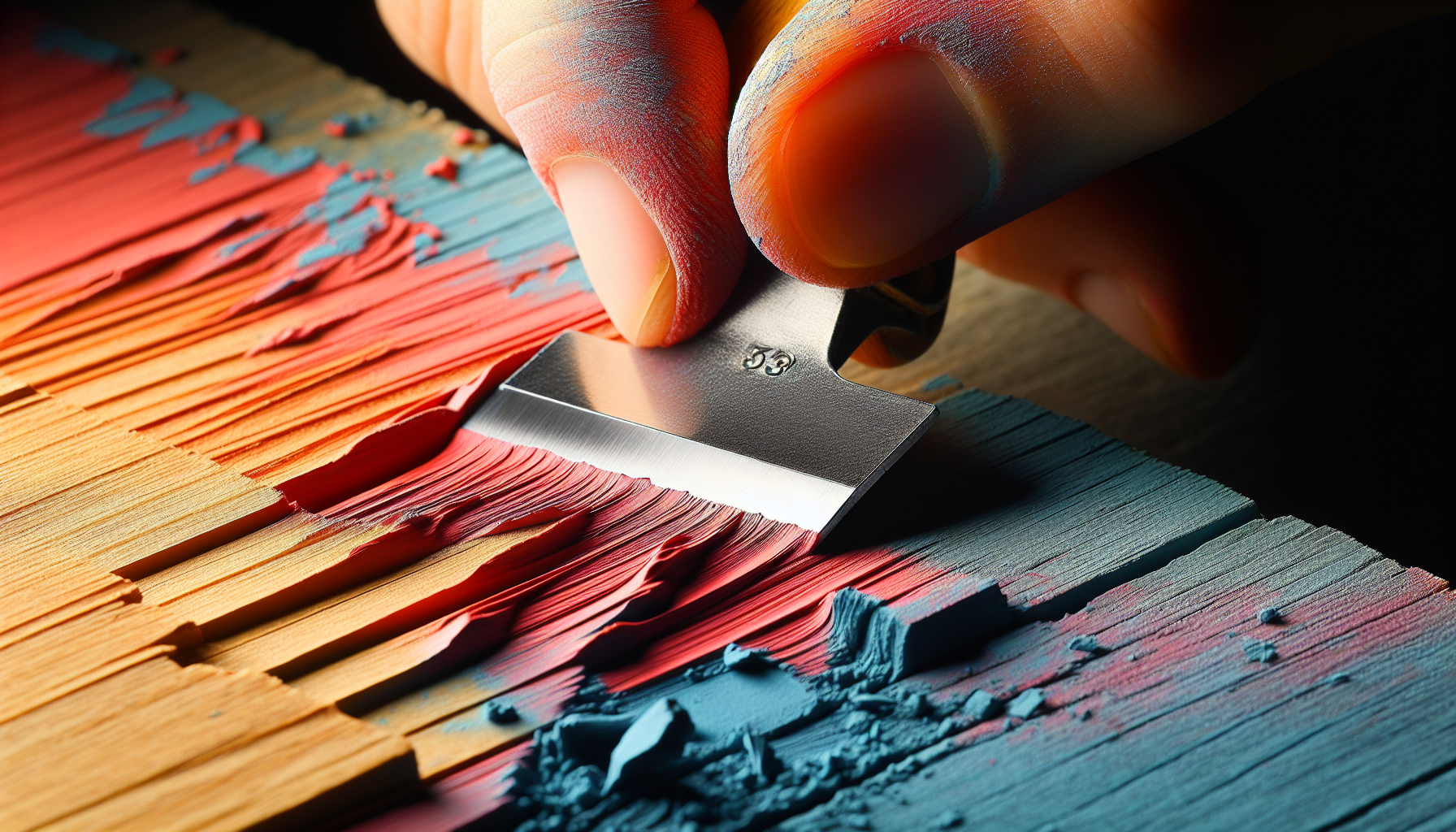In this article, we will examine the safety considerations of using chalk paint around babies. Parents and caregivers are often drawn to the appealing matte finish and vibrant colors that chalk paint offers, but it is crucial to ensure that we prioritize the well-being of our little ones. By understanding the potential risks associated with this popular paint option, we can make informed decisions when it comes to creating a safe environment for our babies.
What is Chalk Paint?
Definition of chalk paint
Chalk paint is a type of decorative paint that is known for its matte finish and velvety texture. It gets its name from its resemblance to traditional chalkboard surfaces. Chalk paint is usually made from a combination of ingredients such as water, calcium carbonate (chalk), acrylics or latex binders, and various additives. This type of paint is popular among DIY enthusiasts and is commonly used to transform furniture, walls, and other surfaces.
Characteristics of chalk paint
Chalk paint has several unique characteristics that set it apart from other types of paint. One of the main features of chalk paint is its excellent coverage and ability to adhere to almost any surface, including wood, metal, plastic, and even fabric. It has a thick consistency, which allows for easy application and minimizes the need for multiple coats. Chalk paint also dries quickly, often within 30 minutes, and creates a beautiful, chalky finish with a slightly distressed or aged look. It is available in a wide range of colors and can be easily mixed to create custom shades.
Common uses of chalk paint
Chalk paint is a popular choice for painting furniture, as it can transform worn-out or outdated pieces into stylish and unique treasures. It can be used to create various effects, such as shabby chic, vintage, or French country styles. Chalk paint is also favored for decorative painting techniques, such as distressing, waxing, or layering, which help achieve different visual effects and textures. Additionally, chalk paint can be used on walls to create a chalkboard or matte finish, on kitchen cabinets, and even on children’s toys or nursery decor.
Understanding Baby Safety
Importance of baby safety
When it comes to babies, safety is of utmost importance. Babies are naturally curious and explore the world around them by touching, tasting, and grabbing objects. It is crucial to create a safe environment to prevent accidents, injuries, and potential health hazards. Taking necessary safety precautions can help ensure the well-being and development of your baby.
Potential risks to consider
When assessing baby safety, it is essential to be aware of potential risks in the surroundings. These can include sharp edges or corners on furniture, choking hazards, unstable or unsecured items, electrical outlets, toxic substances, and more. Babies are especially vulnerable to certain risks due to their limited mobility, inability to communicate effectively, and the fragility of their developing bodies. Accidents or exposure to harmful substances can have severe consequences for their health and safety.
Safety guidelines for baby products
To promote baby safety, it is necessary to follow safety guidelines and standards for baby products. This includes using age-appropriate toys, furniture, and accessories that have passed safety tests and conform to safety regulations. It is vital to research and select products that have undergone rigorous testing for hazards such as choking, entrapment, lead content, flammability, and toxic materials. Parents and caregivers should also regularly check for recalls or safety alerts to ensure the ongoing safety of baby products.
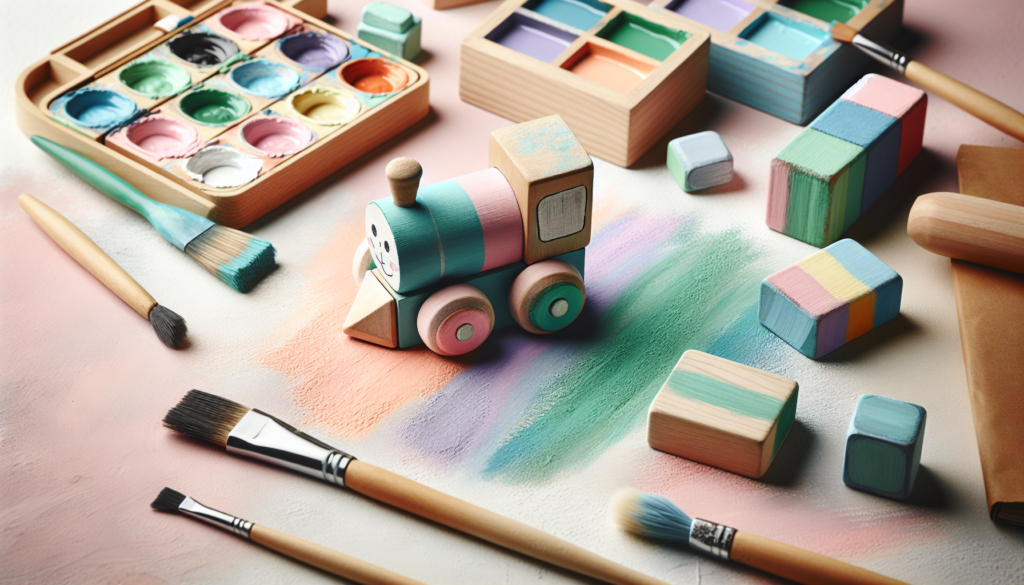
Is Chalk Paint Toxic?
Chemical composition of chalk paint
Chalk paint typically consists of several chemical ingredients that allow it to achieve its unique properties. While each brand may have its specific formulation, common ingredients found in chalk paint include water, calcium carbonate (chalk), acrylics or latex binders, and additives such as pigments or extenders. These ingredients work together to create the paint’s texture, coverage, and finish.
Risks associated with chemical ingredients
In general, chalk paint is considered to be a safe and low-toxicity option for painting projects. However, it is essential to consider the potential risks associated with the chemical ingredients used in chalk paint. Some acrylic or latex binders may contain small amounts of volatile organic compounds (VOCs), which can contribute to indoor air pollution and may cause respiratory issues in sensitive individuals. Additionally, some pigments or additives used in chalk paint may contain heavy metals or other toxic substances, such as lead, cadmium, or formaldehyde.
Regulations governing paint safety
Paint safety is regulated by various governmental and industry organizations to protect consumers and ensure product compliance. In the United States, for example, the Consumer Product Safety Commission (CPSC) sets mandatory safety standards for products, including paints, intended for use by children. Manufacturers are required to comply with these standards to ensure that their products are safe for consumers. However, it is important to note that regulations may vary by country, so it is essential to research and understand the specific regulations governing paint safety in your region.
Health Effects on Babies
Potential health risks
When considering the safety of chalk paint for babies, it is important to be aware of potential health risks associated with its use. While chalk paint is generally considered safe for adults and older children, infants have unique vulnerabilities that need to be taken into account. Some of the potential health risks associated with chalk paint include respiratory irritation, allergic reactions, or sensitivities to specific ingredients, and exposure to heavy metals such as lead or cadmium.
Exposure routes to consider
Babies can be exposed to paint through various routes, including inhalation, skin contact, and accidental ingestion. Inhalation of paint fumes or airborne particles can occur during application or when the paint is not fully cured. Babies who come into direct contact with freshly-painted surfaces may experience skin irritation or develop an allergic reaction. Accidental ingestion, especially in infants who tend to put objects in their mouths, can occur if chalk paint chips or flakes off and is ingested.
Accidental ingestion and inhalation
Accidental ingestion and inhalation are primary concerns when it comes to the safety of chalk paint for babies. Ingesting even small amounts of paint chips or flakes can potentially expose a baby to harmful substances or heavy metals, which can be toxic and pose serious health risks. Inhalation of paint fumes or particles can irritate the respiratory system and potentially lead to respiratory distress, especially in babies with pre-existing respiratory conditions or sensitivities.
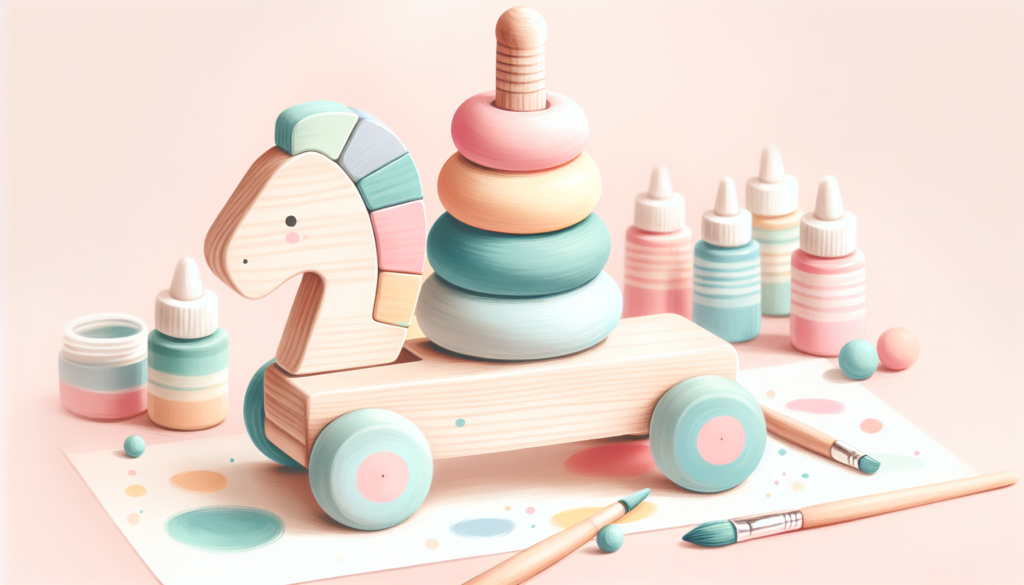
Potential Factors Influencing Safety
Lead content in chalk paint
One of the major factors influencing the safety of chalk paint for babies is the lead content, as lead exposure can have significant negative effects on a baby’s health and development. Lead is a toxic heavy metal that can be found in certain pigments or additives used in paints. It is important to choose chalk paint brands that are specifically labeled as lead-free. Additionally, it is advisable to research the manufacturer’s reputation and look for any certifications or testing documents that confirm their products are free from lead or other harmful substances.
Quality and standards of chalk paint
The quality and adherence to safety standards of chalk paint brands can significantly impact the safety of their products. Reputable manufacturers typically test their paints for potential hazards, ensuring compliance with safety regulations and standards. It is important to seek out brands that have a good reputation and prioritize the safety of their consumers, especially when it comes to products intended for use by babies or young children. Reading product labels, researching manufacturer information, and seeking recommendations from trusted sources can help evaluate the quality and safety standards of chalk paint options.
Age-appropriate uses for babies
Another important factor to consider when using chalk paint around babies is ensuring age-appropriate uses and application techniques. While chalk paint is generally safe for various surfaces, it is crucial to apply it only on surfaces that are out of a baby’s reach. This can help prevent accidental ingestion or contact with freshly-painted surfaces. Additionally, always follow the manufacturer’s instructions regarding drying and curing times to ensure that the paint is fully cured and any potential fumes or particles are no longer present.
Safe Alternatives for Babies
Non-toxic paint options
For parents seeking alternatives to chalk paint, there are various non-toxic paint options available on the market. These paints are specifically formulated to be low in harmful substances, such as VOCs or heavy metals, making them safer for use around babies and young children. Look for paints that are labeled as non-toxic, zero-VOC (volatile organic compound), or low-VOC. These paints are typically water-based and have minimal odor, making them a safer choice for indoor use.
Natural homemade paint recipes
Another option is to create homemade paint using natural ingredients. There are many recipes available for making non-toxic and baby-safe paint using items found in your pantry, such as flour, water, food coloring, or safe natural dyes. Homemade paint recipes offer parents the flexibility to control the ingredients and ensure that no potentially harmful substances are present. However, it is still important to supervise babies closely during painting activities to prevent accidental ingestion or contact with the paint.
Other creative alternatives
In addition to paint, there are several creative alternatives for adding color and visual interest to the nursery or baby’s environment. Wall decals, removable wallpaper, fabric wall hangings, or colorful textiles can be used to create a playful and visually appealing space without the need for paint. These alternatives can be easily changed or removed as the baby grows, providing a flexible and safe option for decorating their surroundings.
Safety Precautions when Using Chalk Paint
Choosing low-VOC or zero-VOC chalk paint
If you decide to use chalk paint around babies, selecting a brand that offers low-VOC or zero-VOC options is a wise choice. These paints have reduced levels of volatile organic compounds, which can contribute to poor indoor air quality and potential health risks. Low-VOC or zero-VOC chalk paint options are generally safer for use in enclosed spaces, such as nurseries or bedrooms, where babies spend a significant amount of time. Always check the product labels or manufacturer’s specifications to ensure the paint meets the desired safety standards.
Proper ventilation during application
When working with any type of paint, including chalk paint, it is crucial to ensure proper ventilation during application. Open windows and doors to promote the flow of fresh air and prevent the buildup of fumes or airborne particles. If painting indoors, consider using fans or setting up a portable exhaust system to remove any lingering paint odors or particles. Ventilation is particularly important when applying paint in confined or poorly ventilated areas, as it helps minimize potential respiratory irritation or exposure to volatile compounds.
Ensuring paint is fully cured before use
To ensure the safety of chalk paint for babies, it is essential to allow the paint to fully cure before allowing the baby to come into contact with the painted surface. Curing times can vary depending on the brand and environmental conditions, so it is important to follow the manufacturer’s instructions regarding drying and curing times. A fully cured paint surface is less likely to release fumes or particles that could pose a risk to the baby’s health. Taking the necessary time to allow for proper curing will help ensure the overall safety of the painted area.
Safe Usage of Chalk Paint for Babies
Application on appropriate surfaces
When using chalk paint around babies, it is important to apply it only on appropriate surfaces that are not easily accessible or within a baby’s reach. Avoid painting areas such as crib rails, teething toys, or other objects that a baby may put in their mouth. Instead, focus on painting furniture or surfaces that are out of the baby’s immediate reach, such as dressers, shelves, or walls that do not border the crib. This prevents direct contact or accidental ingestion of the paint.
Avoiding painted surfaces within reach
Even if you have painted surfaces that are out of a baby’s reach, it is important to ensure that the paint does not chip or flake over time. Regularly inspect painted surfaces for signs of wear or chipping and take immediate action to address any issues. Remove or repair any chipped paint to prevent potential ingestion or contact. Additionally, avoid placing items that a baby may mouth or put in their mouth directly on painted surfaces, as this can increase the risk of accidental ingestion.
Monitoring for signs of wear or chipping
Regular monitoring and maintenance are crucial when using chalk paint around babies. Keep a close eye on painted surfaces for any signs of wear, chipping, or deterioration. If you notice any issues, take the necessary steps to repair or remove the damaged paint layer. Keeping the painted surfaces in good condition helps prevent the risk of paint chips or flakes becoming accessible to the baby. By staying vigilant and proactive, you can help ensure the ongoing safety of the painted area.
Tips for Evaluating Chalk Paint Safety
Reading product labels and certifications
When evaluating the safety of chalk paint brands, start by reading product labels and packaging information. Look for clear indications of any safety certifications or testing that the paint has undergone. Labels may specify whether the paint is non-toxic or low in VOCs, helping you make an informed decision about its suitability for use around babies. Additionally, check for any warnings or precautions provided by the manufacturer, which could highlight potential risks or safety considerations.
Researching manufacturer’s reputation
Researching the reputation of the chalk paint manufacturer can provide valuable insights into their commitment to product safety and quality. Look for reviews or feedback from other consumers who have used the same brand or product. Assessing the manufacturer’s reputation for transparency, adherence to safety standards, and customer satisfaction can help you gauge their reliability and the overall safety of their products. Consider reaching out to the manufacturer directly if you have specific concerns or questions about the safety of their chalk paint.
Seeking recommendations and reviews
One of the best ways to evaluate the safety of chalk paint for babies is to seek recommendations and read reviews from other parents or individuals who have used the product. Online parenting forums, social media groups, or trusted baby product review websites can be valuable sources of information. Pay attention to any firsthand experiences or feedback regarding the safety, quality, and ease of use of the chalk paint. While individual experiences may vary, seeking recommendations and reading reviews can provide helpful insights into the overall safety of specific brands or options.
Conclusion
When it comes to choosing and using chalk paint around babies, finding the right balance between aesthetics and safety is of utmost importance. Understanding the potential risks, health effects, and influencing factors can help you make informed decisions to create a safe environment for your little one. While chalk paint is generally considered safe for use, it is essential to consider factors such as lead content, adherence to safety standards, and age-appropriate uses. By following safety precautions, exploring safe alternatives, and staying informed, you can ensure a safe and visually appealing space for your baby to grow and thrive.
